The Bar Exam—With Paul Scanlon
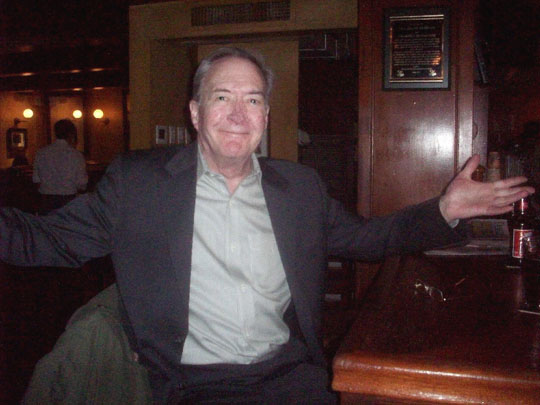 I thought I’d start a new semi-regular (maybe monthly) feature here at TWM. It’s going to be a feature where I interview someone at a bar. Maybe a writer, maybe a musician or maybe a total stranger, who knows? As usual, I’m just winging it here. To start off this series, I asked my friend Paul Scanlon who’s various credits include being the Managing Editor at both Rolling Stone and G.Q. and last year editing the book: “Fear and Loathing at Rolling Stone: The Essential Writing of Hunter S. Thompson” with Rolling Stone editor Jann Wenner. I met Paul at our usual meeting spot, Mumbles Bar and Restaurant for some drinks and some questions. Paul’s had a great career in journalism, but since I grew up with Rolling Stone, I thought I’d keep the questions to that particular time in Paul’s history. And now, live from Mumbles, the debut of, “The Bar Exam.”
I thought I’d start a new semi-regular (maybe monthly) feature here at TWM. It’s going to be a feature where I interview someone at a bar. Maybe a writer, maybe a musician or maybe a total stranger, who knows? As usual, I’m just winging it here. To start off this series, I asked my friend Paul Scanlon who’s various credits include being the Managing Editor at both Rolling Stone and G.Q. and last year editing the book: “Fear and Loathing at Rolling Stone: The Essential Writing of Hunter S. Thompson” with Rolling Stone editor Jann Wenner. I met Paul at our usual meeting spot, Mumbles Bar and Restaurant for some drinks and some questions. Paul’s had a great career in journalism, but since I grew up with Rolling Stone, I thought I’d keep the questions to that particular time in Paul’s history. And now, live from Mumbles, the debut of, “The Bar Exam.”
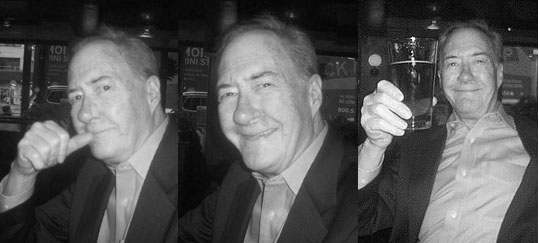 Marty: First off, great to see you, and cheers!
Marty: First off, great to see you, and cheers!
Paul: Cheers right back, and TWM rocks!
Marty: Thanks, Paul! You were the Managing Editor of Rolling Stone for most of the 1970s. How did you get the gig?
Paul: I had worked on the San Francisco State University paper with Ben Fong-Torres, who was one of the early Rolling Stone hires. I started reading Rolling Stone when I was in the Army, stationed at Ford Ord, near Monterey. Ben invited me up to San Francisco for a couple of days. He took me to the first Rolling Stone office on Brannan Street. I was amazed by the sheer energy of the place and of the people. I got out of the Army and got reporting job with the Palo Alto Times. It was a good gig, and my beats included a nearby NASA research facility and the Stanford campus. Got a call from Ben late in 1970. He said Rolling Stone was looking for someone to "write about rock music in the Bay Area." I got the job. The short version of the next part is that Rolling Stone was very much in flux and that time, and nine months later I was the Managing Editor.
 Marty: Some people see those years at Rolling Stone as the "glory years." What do you think?
Marty: Some people see those years at Rolling Stone as the "glory years." What do you think?
Paul: Well, it was San Francisco and it was the 70s, and that was pretty damn great. It was also the period when the magazine took some giant steps and established itself in the national conversation. The Manson Family and Altamont issues won Rolling Stone's first National Magazine Award in 1970. An exhaustive investigative piece on the kidnapping of Patricia Hearst caused a sensation in 1975. On the day it hit the newsstands, the story led off all three networks' primetime news broadcasts. Walter Cronkite talking about Rolling Stone? Holy shit! There was also an amazing aggregation of talent on staff, not the least of which was Dr. Hunter S. Thompson.
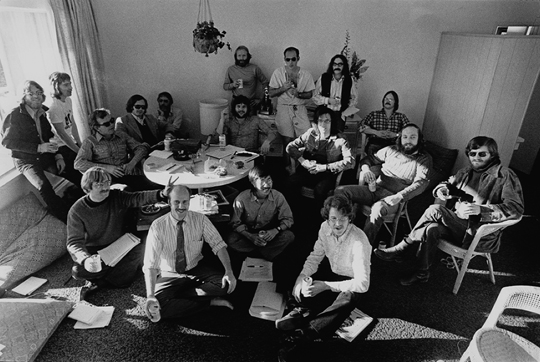 Big Sur Editorial Conference, December, 1971. Left to right, rear: Tim Ferris, NY bureau chief; Andrew Bailey, London bureau chief; Grover Lewis, dark glasses; Paul Scanlon, dark glasses; art director Bob Kingsbury against wall; Jann Wenner; Jerry Hopkins behind Jann; Hunter Thompson in hospital gown; Bob Chorush, LA bureau chief; Jon Landau, in front of Chorush; Bob Greenfield and Joe Eszterhas; Tim Cahill in plaid shirt. Left to write, front: Tim Crouse, Charlie Perry, Ben Fong-Torres and David Felton. Jonathan Cott was on assignment in Europe. Photo by Annie Leibovitz.
Big Sur Editorial Conference, December, 1971. Left to right, rear: Tim Ferris, NY bureau chief; Andrew Bailey, London bureau chief; Grover Lewis, dark glasses; Paul Scanlon, dark glasses; art director Bob Kingsbury against wall; Jann Wenner; Jerry Hopkins behind Jann; Hunter Thompson in hospital gown; Bob Chorush, LA bureau chief; Jon Landau, in front of Chorush; Bob Greenfield and Joe Eszterhas; Tim Cahill in plaid shirt. Left to write, front: Tim Crouse, Charlie Perry, Ben Fong-Torres and David Felton. Jonathan Cott was on assignment in Europe. Photo by Annie Leibovitz.
Marty: What were your day to day duties there?
Paul: I edited all the staff writers in San Francisco, L.A .and London, and a bunch of freelancers, to boot. Ben Fong-Torres was the music editor, so I really didn't have much to do with rock and roll, but if Ben, or Chet Flippo or Cameron Crowe wrote a cover piece, I was usually the editor. I also edited a sort of op-ed section called News & Opinion, and Ralph Steadman was our political cartoonist. Working with Ralph was so much fun I almost felt guilty.
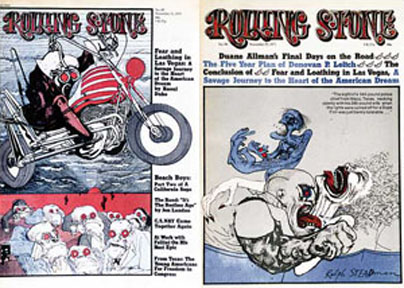 Marty: You were one of the first people to read the manuscript for Hunter Thompson's "Fear and Loathing in Las Vegas." What was it like reading that for the first time?
Marty: You were one of the first people to read the manuscript for Hunter Thompson's "Fear and Loathing in Las Vegas." What was it like reading that for the first time?
Paul: It was actually only about a dozen pages, with Duke and his attorney roaring through the desert in the Great White Shark. Hunter loped in one day—he never really walked—and handed a sheaf of legal-sized pages to me and two other editors, Charlie Perry and Grover Lewis, and loped out. It was amazing stuff and none of us could stop laughing. By that afternoon, most of the staff had read the pages, and we were tossing lines back and forth: "One toke? You poor fool. Wait until you see those goddamned bats!"
Marty: Do you have a classic Hunter story to share?
Paul: Actually, all the best ones are in my introduction to "Fear and Loathing at Rolling Stone." (Nudge, nudge.) But here's a quick Hunter-related bit: The head fact-checker in San Francisco had a sign over the doorway of her office: "If you call someone an ignorant pig fucker, you had damn well better be able to produce the pig."—Hunter S. Thompson.
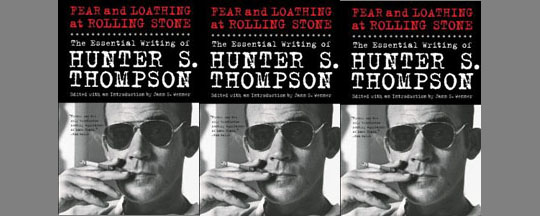 Marty: What was it like when Rolling Stone moved from San Francisco to New York?
Marty: What was it like when Rolling Stone moved from San Francisco to New York?
Paul: I was lucky because I moved here 11 months before everyone else to run the New York City bureau while continuing as Managing Editor. The plan was for everyone to follow me in about three months, but moving a magazine and its staff from one coast to the other turned out to be complicated and expensive. We put together a special New York issue here and had it in the can so the San Francisco folks could have a little breathing room. But just as they arrived, Elvis Presley died, very close to the end of the two-week publishing cycle. We shelved the New York issue and put together an Elvis tribute in four days and nights. It was 1977, the Summer of Sam, and the city was still in the grips of a vicious heat wave. The new offices on Fifth Avenue were only partially furnished, the paint wasn't completely dry, and there was no air conditioning. Welcome to New York!
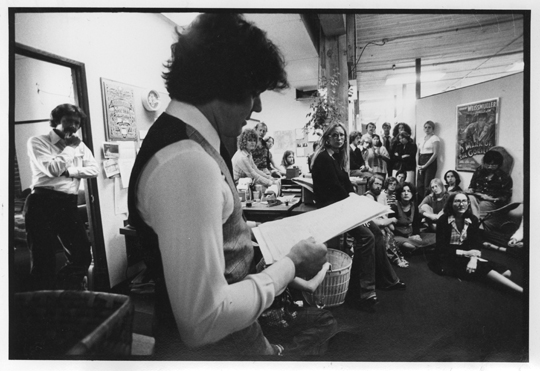 A photo of Jann Wenner in 1976 announcing to the Rolling Stone staff that the magazine is moving to New York City. Paul Scanlon is on the far left, leaning in the doorway.
A photo of Jann Wenner in 1976 announcing to the Rolling Stone staff that the magazine is moving to New York City. Paul Scanlon is on the far left, leaning in the doorway.
Marty: As you know, I'm obsessed with bars and enjoy the occasional beer or twelve. What can you tell me about Jerry's Inn, the San Francisco bar where Rolling Stone's writers and editors took refuge?
Paul: Rolling Stone was located south of Market Street, which was a very gritty, light industrial district with blue-collar taverns not friendly to young people with longish hair (Nowadays it's almost totally gentrified, and known as "SOMA"). Jerry's Inn, just across the street, was slightly more upscale. Jerry and Ken Francheschi welcomed us with open arms, possibly because Grover Lewis, Joe Eszterhas, Tim Cahill and I could really knock them back. By 1973 it was our clubhouse, not just writers and editors, but art directors, ad sales people and accountants. The booze was plentiful, Ken's lunches were decent, and the vibe was excellent. Between lunch hour and cocktail time, the place was pretty quiet, and we'd often entertain visiting—and thirsty—musicians. I remember having beers with Doug Sahm, Bob "the Bear" Hite of Canned Heat, and Ramblin' Jack Elliot. Jerry didn't have the foggiest notion of who these folks were. One day Ben was entertaining Bob Thiele, legendary record guy and John Coltrane's producer, and his wife Teresa Brewer, who had been a pop singing megastar in the 1950s. Jerry went completely nuts. For weeks he would say : "Little Tessie Brewer was in my place!"
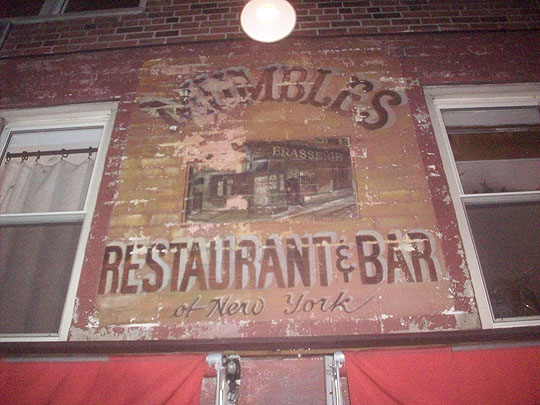 Marty: What are some of your favorite New York bars these days?
Marty: What are some of your favorite New York bars these days?
Paul: I have to give a shout out to The Lion's Head in the West Village, one of the last great saloons, that closed in 1995. It was a literary bar, and the regulars had their book jackets framed on the back wall. One day a tourist wandered in and said, "Is this the bar where writers with drinking problems hang out?" The late, great Joe Flaherty shot back a reply: "No! This is the bar for drinkers with writing problems." I love Bill's Gay Nineties on East 54th Street. It was originally a speakeasy and has a terrific piano bar. I've been going to Molly's, on Third Avenue near 23rd, since I moved here, It's an authentic Irish "Shabeen." And of course there's Mumbles, a great place to watch sports on TV and the home of two of my favorite bartenders, Hal and Sarah.
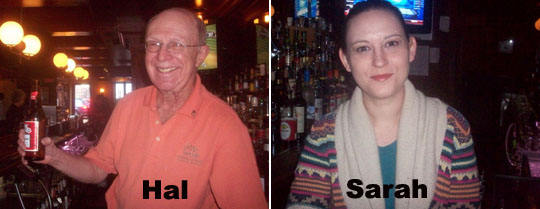 Marty: It's time for another round. Any parting words?
Marty: It's time for another round. Any parting words?
Paul: Sure. Sarah! Another Harpoon lager, please.
Further Reading: The Wall Street Journal, Blog Critics and Good Reads.
 Dr. Hunter S. Thompson,
Dr. Hunter S. Thompson,  Mumbles,
Mumbles,  Paul Scanlon,
Paul Scanlon,  Rolling Stone Posted on
Rolling Stone Posted on  Monday, February 27, 2012 at 9:20AM
Monday, February 27, 2012 at 9:20AM 